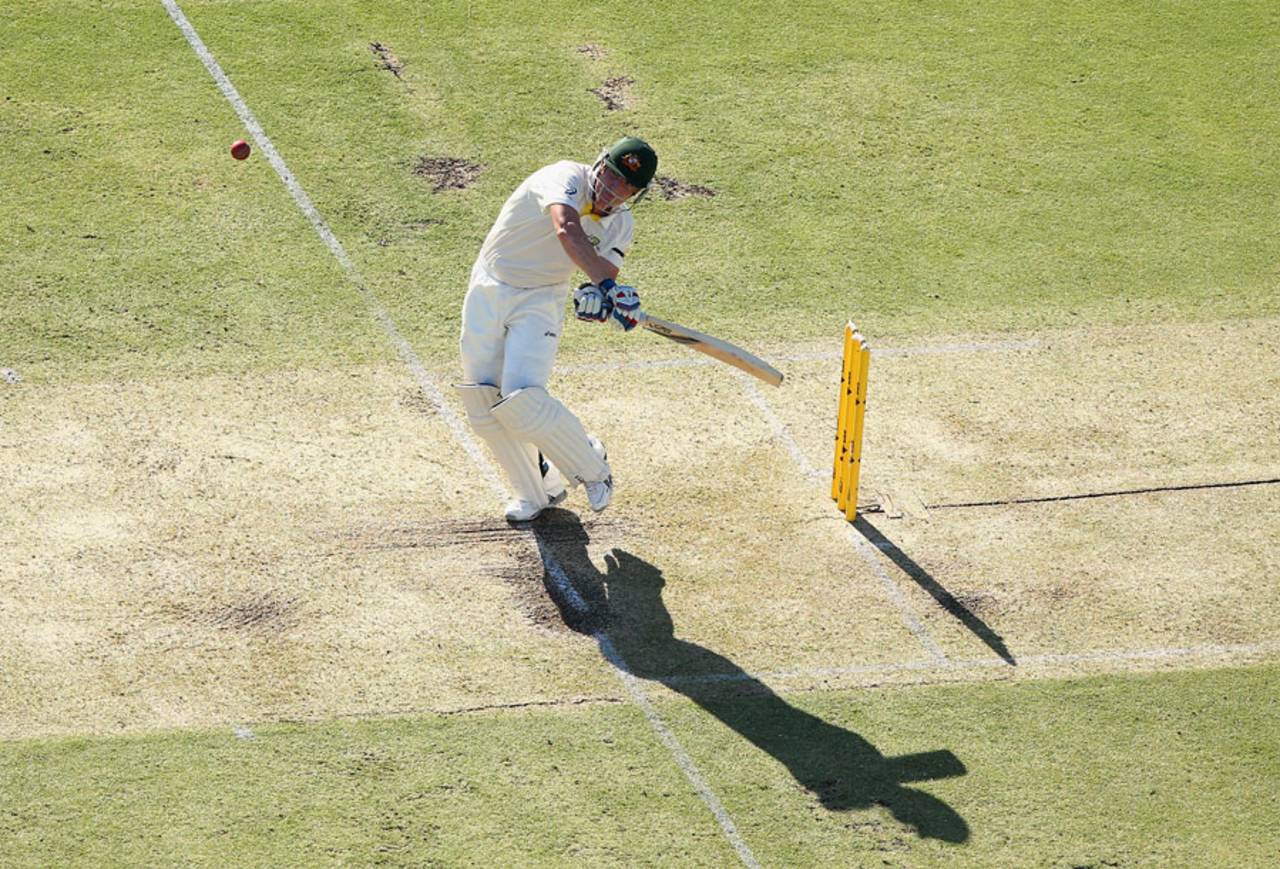Test cricket is an incredibly hard sport. Despite the length of the span over which a match unfolds, the outcome can be decided by short passages of play when the game is in equilibrium, waiting for one or the other team to gain ascendancy. The Ashes, the only Test series now with five matches, extends over such a long time, it is easy to overlook the crucial turning points and focus on the larger narratives. The 4-0 scoreline in this year's Ashes suggests a thorough beat-down, and of Australia dominating and overpowering a feeble England team, but the differences between the two teams are a bit more nuanced and fine than that allows for.
In physics, equilibrium is generally said to be in one of three states: stable, unstable and neutral. When a body is in neutral equilibrium, even when a deviation occurs, it continues to remain neutral. A common example given is that of a ball lying on flat ground. Imagine the scenario of a Test match on a dead pitch, like the one India played Sri Lanka in
at the SSC in 2010. Even as wickets fell, the match remained in a state of stalemate, and was eventually drawn.
If a body is in stable equilibrium, when a small deviation from that state occurs, forces emerge that tend to return the body to stable equilibrium. An example of such a state is a ball placed in a bowl. If the ball were to be moved from its state of equilibrium at the bottom of the bowl, gravity will eventually restore it to that state. In cricket, such a state is comparable to that after the fall of two wickets following a sizeable opening stand. Temporarily there is instability, but often the batsmen following up shore up the situation and the Test match continues at a more sedate pace.
Think of a bowl turned upside down, and a ball placed on it. Momentarily the ball may be in balance but when there is the slightest deviation, it will roll down one or the other side of the bowl. This state is known as unstable equilibrium. There were several such situations where the fate of the Test match hung in the balance in the ongoing Ashes series, where the door was wide open for England to assert their superiority. But as it turned out, it was Australia who capitalised on these, invariably, and now are on their way to whitewashing their arch-rivals.
In the opening Test,
in Brisbane, on a pitch offering pace and bounce, Australia were almost dead and buried at 132 for 6, and only Brad Haddin in the company of bowlers standing in the way of England continuing to assert their recent superiority over Australia. The Test, and perhaps the fate of the series, was hanging in the balance, waiting for the competitors to give it a decided push to get the ball rolling. Haddin and Mitchell Johnson added 114 runs for the seventh wicket, and Australia finished with 295. England conceded a first-innings lead in excess of 150 runs to lose any realistic chance of winning the Test.
On a typically flat pitch,
in Adelaide, after the emotional departure of Jonathan Trott from the tour, England had worked themselves back into a position of contention on the first day, reducing Australia to 174 for 4. In the final session of the opening day, with the match
engrossingly poised (as ESPNcricinfo's UK editor
called it) England dropped three chances, including a dolly to Michael Carberry at point, allowing Michael Clarke and Haddin to pile on centuries and sap the life out of them. Johnson bullied his way through a broken England to deliver the match for his team.
The third Test,
in Perth, provided England two opportunities to set things right and revert to winning ways. With temperatures soaring above 100°F, and Australia looking to pummel England into submission and further cement their 2-0 advantage, it inadvertently provided an opening at 143 for 5. England couldn't find a way through Haddin, again, and he in the company of Steve Smith, helped Australia to 385. Going into the post-tea session on day two at 91 for 2, England were
positioned precariously, but the catch David Warner took off Alastair Cook's cut shot soon after play resumed pushed them into a hole they wouldn't climb out of.
Yet again
in Melbourne, with the Ashes lost, England were looking at claiming a consolation win. Even with Haddin (again!) reducing the size of the first-innings lead, England sat comfortable at 86 for 1 (an overall lead of 137 runs, and nine wickets in hand) when Peter Siddle trapped Carberry at the crease and Johnson's powerful throw found Joe Root short. The seemingly inevitable collapse followed, and Australia are just one performance away from inflicting Ashes whitewashes either side of Ashes misery.
A Test match is generally in a state of neutral or stable equilibrium, trundling along at its own anachronistic pace, suddenly presenting acute moments of instability. Teams that capture these moments usually find themselves winners. The differences are so thin and the distinctions that sharp. If John Keating from Dead Poet's Society were a coach or captain of a cricket team, he'd probably inspire his wards with the words, "Carpe tempus instabiles aequilibrium"
